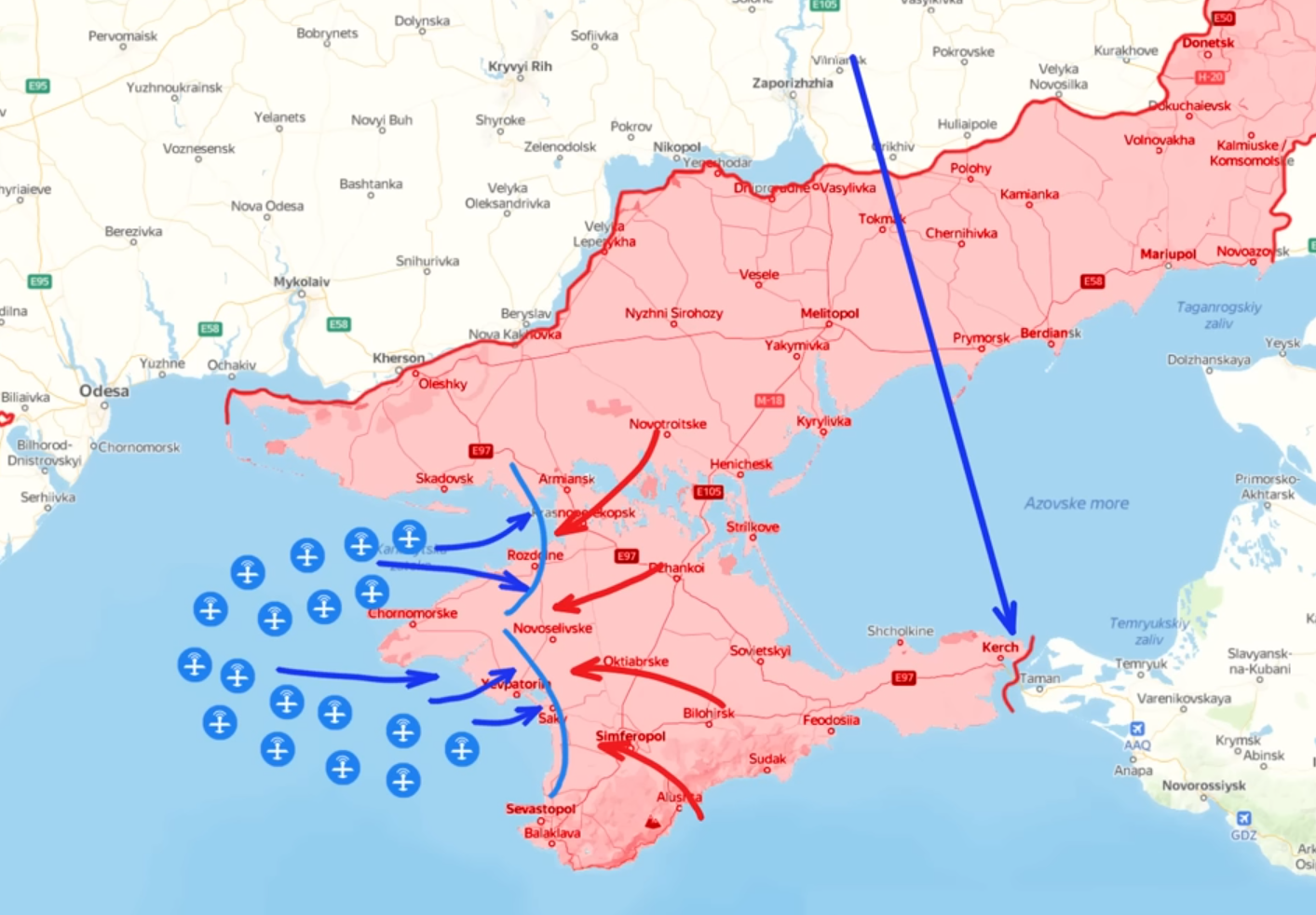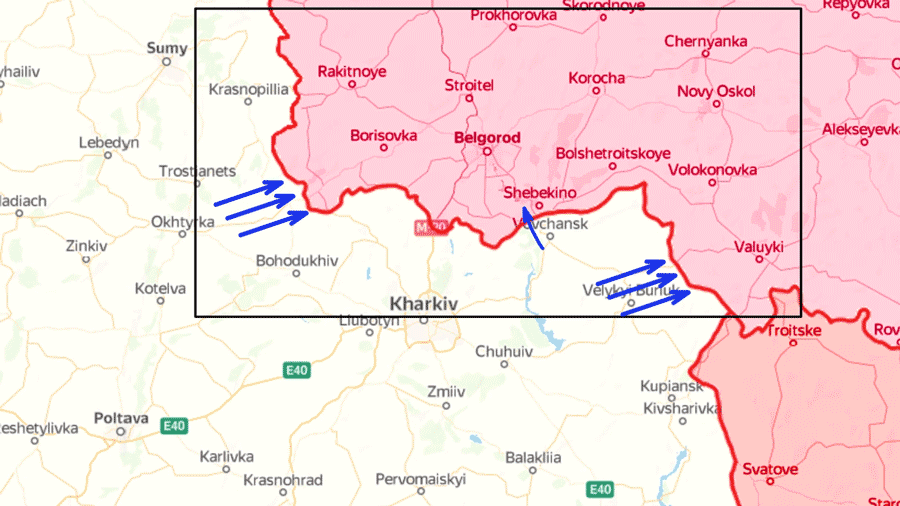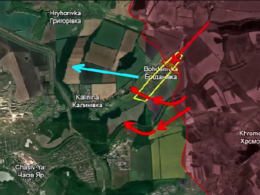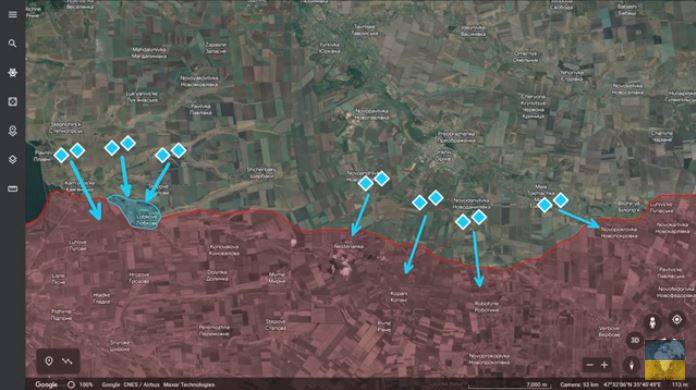First of all, Ukrainians launched several groups of drones from Odesa, which primarily headed toward Armiansk, Novoozerne, and Saky in the west of Crimea. Local residents reported hearing multiple explosions near the Russian base in Novoozerne. The available footage from the region confirms that a lot of Ukrainian drones reached this region.
Later, it was revealed that Ukrainians used in this attack only cheap Chinese drones. Combining this fact with the fact that the strike was quite broad, we can conclude that the goal of the strike was not necessarily to destroy Russian military objects but rather to draw attention away from the main strike. The target of the main strike became the Kerch Bridge.

A month ago, Ukrainians successfully damaged the bridge for the second time by using marine drones. A week ago, Ukrainians tried to repeat their success and strike the bridge with marine drones once again, but it did not go well as the Russians prepared the area, which is why today, Ukrainians tried something new. This time Ukrainians reportedly used modified ballistic missiles S-200.
Russian sources reported that Ukrainians used 2 missiles simultaneously. This time, Ukrainian missiles were shot down. However, Ukrainian forces gained a great insight into the current disposition of the Russian air defense because the locals filmed the Russian air defense work. The footage completely gave away Russian positions, which is why the Russian media expressed extreme discontent, called them traitors, and urged other people not to do this.
Unfortunately for Russians, Ukrainians launched one more missile 2 hours later, at around lunch time, which led to even more footage exposing Russian positions. The follow-up strike, therefore, is just a matter of time. And the strike on the Kerch bridge is a logical continuation of the destruction of the Russian logistics that we have recently seen.

Less than a week ago, Ukrainians conducted a series of strikes on 3 important Russian bridges in the northern part of Crimea.
The first and second targets became the Chonhar road bridges. The footage shows that Ukrainians made a hole in the center of both bridges. Even though the damage does not seem to be extensive, some Russian sources mentioned that the frame of the bridge was damaged.
The third target of the strike became the road bridge across the Henichesk Strait. Russian sources reported that Ukrainian forces launched 12 missiles and that 3 missiles managed to pass through the Russian air defense. As can be seen from the footage, this bridge suffered significantly and incurred substantial damage to the roadbed. This is extremely important because, less than 2 weeks ago, the Russian Federal Security Service suspended civilian entry to the Arabat Spit, which means that this bridge was allocated for the exclusive use of the Russian military.
The extent of the damage to the bridge across the Henichesk Strait and the 2 Chonhar road bridges is likely forcing Russian forces to redirect military traffic to longer western routes. Simultaneously, most, if not all, civilian road traffic now has to pass along the same route. Moreover, 2 weeks ago, Ukrainians also took out the Russian railroad bridge leading to Melitopol. This major bottleneck in Russian ground lines of communication will likely pose significant disruptions to logistics and chances for delays and traffic jams.

On top of the delays, the western ground lines of communication are closer to Ukrainian positions in the upper Kherson region and, in many cases, within artillery range of the Ukrainian-held western bank of the river. Russian forces could reduce risks from Ukrainian indirect fire by taking slower and less efficient village roads northeast of Chaplynka, but they would still be within HIMARS range. Such a setting, in fact, has already deranged Russian supplies to the front, caused a lot of problems on the zero line, and recently allowed Ukrainians to penetrate Russian defense by multiple km, especially in the Velyka Novosilka direction. But more on that in the next video.
In our daily frontline report, we pair up with the military blogger Reporting from Ukraine to keep you informed about what is happening on the battlefield in the Russo-Ukrainian war.





